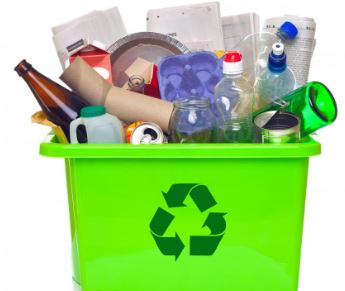The BrownstoneTop Stories
Sustainable Living Tips for You Home

Living sustainably in your home or apartment not only benefits the environment but also promotes a healthier lifestyle and can save you money in the long run. Here are some practical tips that focus on reducing, reusing, and recycling, as well as products and services that can help make a positive impact globally.
Reduce
- Energy Efficiency:
- Switch to LED Bulbs: LED bulbs consume up to 85% less energy than incandescent bulbs and last longer. Actionable Step: Replace all incandescent bulbs in your home with LED bulbs. Begin with the most used rooms, such as the living room and kitchen, to maximize savings.
- Smart Thermostats: Install a smart thermostat to optimize heating and cooling, reducing energy usage and lowering utility bills. Actionable Step: Purchase a smart thermostat like the Nest or Ecobee, and set it to lower the temperature at night and when you are away from home.
- Unplug Devices: Unplug electronics when not in use to avoid phantom energy consumption. Actionable Step: Use a power strip for clusters of devices (like those around your TV or computer) and switch off the strip when the devices are not in use.
- Water Conservation:
- Low-Flow Fixtures: Replace old faucets and showerheads with low-flow versions to significantly reduce water usage. Actionable Step: Purchase low-flow showerheads and faucets from brands like Waterpik or Moen, and install them yourself or with the help of a plumber.
- Fix Leaks: Repairing dripping taps and leaking toilets can save thousands of gallons of water each year. Actionable Step: Inspect all faucets and toilets for leaks. If you find a leak, either fix it yourself using online guides or call a plumber.
- Sustainable Products:
- Eco-Friendly Cleaning Supplies: Use biodegradable and non-toxic cleaning products to reduce harmful chemical use. Actionable Step: Replace your current cleaning supplies with eco-friendly options like Seventh Generation or Mrs. Meyer’s. Start with basic items like dish soap and multi-surface cleaner.
- Bulk Buying: Purchase items in bulk to minimize packaging waste. Actionable Step: Identify non-perishable items you use frequently (e.g., rice, pasta, and soap) and buy them in larger quantities from stores like Costco or online retailers.
Reuse
- Reusable Items:
- Shopping Bags: Use reusable bags instead of single-use plastic ones. Actionable Step: Keep a set of reusable shopping bags in your car or by the front door so you remember to take them when you go shopping.
- Containers and Bottles: Invest in durable, reusable containers and water bottles to reduce reliance on disposable plastics. Actionable Step: Purchase a set of reusable glass or stainless steel containers and a high-quality water bottle from brands like Hydro Flask or S’well. Carry the water bottle with you daily to avoid buying plastic bottles.
- Repurpose Household Items:
- Furniture: Instead of buying new, consider refurbishing old furniture or purchasing second-hand. Actionable Step: Check out local thrift stores, garage sales, or online marketplaces like Facebook Marketplace for affordable furniture. Use paint, new hardware, or upholstery to give old furniture a new look.
- Clothing: Repair or upcycle old clothes instead of throwing them away. Actionable Step: Learn basic sewing skills to mend clothes or transform them into new items. For example, turn old t-shirts into reusable tote bags.
- DIY Projects:
- Crafting with Recyclables: Create storage solutions or decor using items like jars, cans, and cardboard. Actionable Step: Use Pinterest or DIY blogs for inspiration on upcycling projects. Start with simple projects like turning glass jars into storage containers or planters.
Recycle
- Proper Waste Sorting:
- Recycling Bins: Set up separate bins for paper, plastics, glass, and metals to ensure proper recycling. Actionable Step: Label bins clearly and place them in convenient locations, such as the kitchen or garage, to encourage family members to sort waste correctly.
- Composting: Compost organic kitchen waste to reduce landfill use and create nutrient-rich soil for plants. Actionable Step: Start a compost bin in your backyard or use a countertop compost container for food scraps. Learn what can and cannot be composted to avoid contamination.
- E-Waste Recycling:
- Responsible Disposal: Take old electronics to designated e-waste recycling centers rather than discarding them in the trash. Actionable Step: Find local e-waste recycling events or centers by searching online. Gather all unused electronics and take them for proper disposal.
- Product Stewardship:
- Return Programs: Participate in manufacturer take-back programs for items like batteries, light bulbs, and ink cartridges. Actionable Step: Look for take-back information on product packaging or the manufacturer’s website. Collect used items and return them during your next shopping trip.
Products and Services for a Global Impact
- Sustainable Brands:
- Eco-Friendly Home Goods: Companies like Seventh Generation and Eco-Me offer household products that are environmentally friendly. Actionable Step: Make a list of products you need to replace and choose sustainable options from these brands during your next shopping trip.
- Sustainable Fashion: Brands such as Patagonia and Eileen Fisher focus on sustainable and ethical clothing production. Actionable Step: When purchasing new clothing, choose items from these brands or similar ones that prioritize sustainability.
- Green Energy Providers:
- Renewable Energy: Switch to energy providers that offer green energy solutions like solar or wind power. Actionable Step: Research green energy providers in your area and compare rates. Consider switching to a provider that offers renewable energy plans.
- Sharing Economy Services:
- Car-Sharing Programs: Services like Zipcar reduce the need for individual car ownership, decreasing overall emissions. Actionable Step: Sign up for a car-sharing service if you live in a city where it is available. Use it for occasional trips instead of owning a car.
- Tool Libraries: Borrow tools for home projects instead of purchasing new ones. Actionable Step: Find a local tool library or community center that offers tool lending. Borrow tools as needed for DIY projects around the home.
By incorporating these sustainable living practices into your home or apartment life, you can contribute to a healthier planet and inspire others to do the same. Small changes, when collectively adopted, can lead to significant positive impacts globally.





